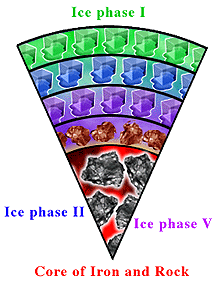This drawing illustrates the general composition of icy moons.
The Composition of Icy Moons
Not only ice but several different kinds of snow (crushed ice) have been found on the surfaces of these moons.
Scientists can only guess what the inside is made of, but when the Voyager missions flew by some the icy moons, measurements were made that showed that the inside of the moons might also made of ice.
The fact that the major moons are made primarily of ice suggests a certain path for the evolution of these bodies.
You might also be interested in:
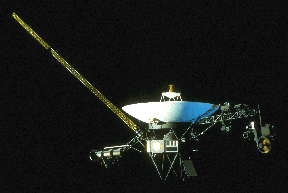
Unexpected discoveries made by the two Voyager spacecrafts during their visits to the four largest planets in our solar system have changed the field of space science. Voyager 2 was launched on Aug. 2
...more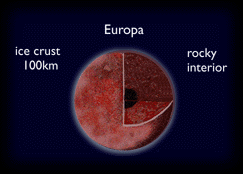
The diagram to the left shows the possible interior of Europa. The composition of the icy moons is mostly ice, therefore there is probably a small core of rocky material buried inside, covered with ice.
...more
Amalthea was discovered by E Barnard in 1872. Of the 17 moons it is the 3rd closest to Jupiter. Amalthea is about the size of a county or small state. Amalthea is named after the goat in Greek mythology
...more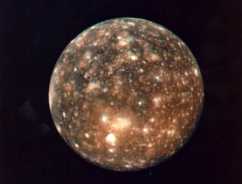
Callisto was first discovered by Galileo in 1610. It is the 2nd largest moon in the solar system, and is larger than the Earth's moon. It is about as big as the distance across the United States. Callisto
...more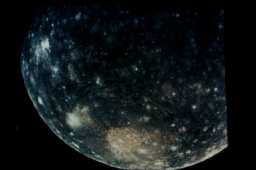
Measurements by the Galileo spacecraft have been shown that Callisto is the same inside from the center to the surface. This means that Callisto does not have a core at the center. This means that, unlike
...more
Many different types of surface are shown in this picture. In the front is a huge crater, which goes for a long way over the surface. This crater could be compared to that of Mimas. They both show that
...more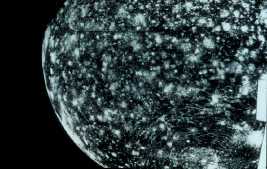
The surface of Callisto is deeply marked with craters. Craters are the little white marks in the picture. It looks like it might be the most heavily cratered body in the whole solar system. And some of
...more
